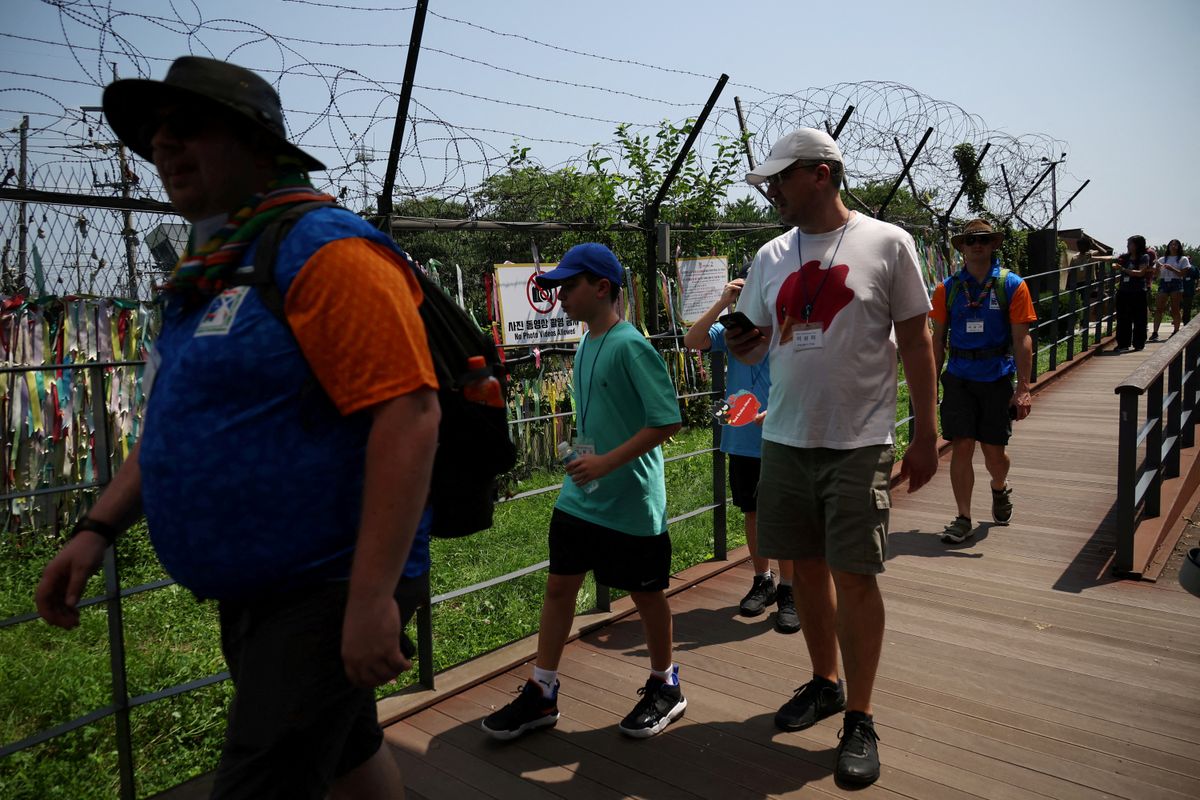Why is Korea’s DMZ attracting tourists?
North and South Korea never actually signed a peace treaty, so the DMZ is kind of a tense place to be.

A few minutes every morning is all you need.
Stay up to date on the world's Headlines and Human Stories. It's fun, it's factual, it's fluff-free.
When the Korean War was ending in the summer of 1953, the UN, North Korea and China created the Korean Armistice Agreement. Part of this plan involved creating what’s known as the “Demilitarized Zone” (DMZ). The DMZ is basically a 250-kilometer-long and 4-kilometer-wide border splitting North and South Korea, and it’s pretty high security. Within the DMZ, neither country can fire weapons, build up their militaries or stage aggressive acts. It’s also one of the most heavily-fortified borders in the world. North and South Korea never actually signed a peace treaty, so the DMZ is kind of a tense place to be.
So who would guess this area is a big tourist destination? Everyone was kind of wondering that when a US soldier made headlines this week for blending in with a tour group and then running across the border into North Korea.
Every day, the United Nations Command (UNC) leads tours of civilians through the DMZ. The groups meet in the truce village of Panmunjom. Tour groups have to follow strict rules, but they’re allowed to (technically) cross the border from South to North Korea, given that they only step over the demarcation line inside Military Armistice Commission huts.
"When you're on that tour, you realize that it's just a couple of inches, a little border, and that you can easily step into North Korea the way President Trump did in 2019," said Jean H Lee, a former Korean bureau chief for the Associated Press, who has been to the DMZ many times from either side of it. "And so, in some ways, if you've been there, you also recognize how tempting it is."
Before the pandemic, tons of tourists toured the DMZ, and both South and North Korean militaries were on high alert. With tourism still limited in South Korea, there are fewer tour groups at the moment, and the militaries don’t have to take as many precautions.
But the situation is still tense, so tourists have to sign up to visit through the South Korean government or through tour agencies approved by the UNC. They also have to follow rules on how to dress, and they’re warned that they might have to leave the DMZ “at any moment” if something happens. Tours are also very limited, with every visitor required to hand over a copy of their passport to secure a spot.
Even with all of the safeguards they have to take and the instability of the area, tourists are still scrambling to explore the DMZ.
“[They] recognize borderlands as symbolic cultural landscapes loaded with iconic sites and attractions that reflect the public memory,” according to the International Journal of Tourism Research. “This memory is often focused on the past or ongoing wars, or territorial conflicts that have formed the border.”




Comments ()